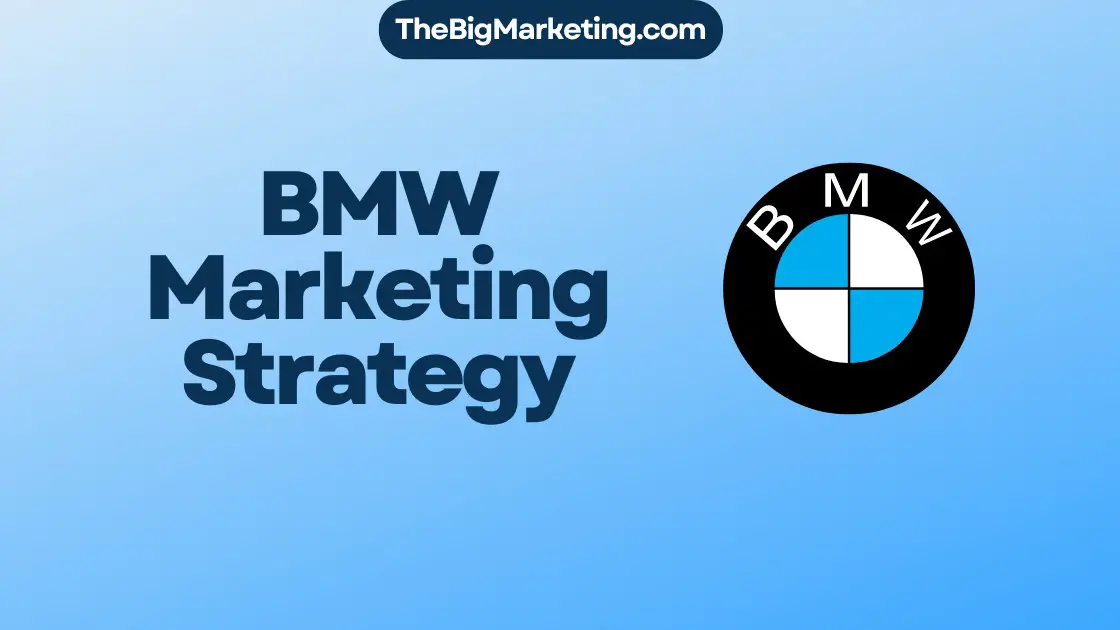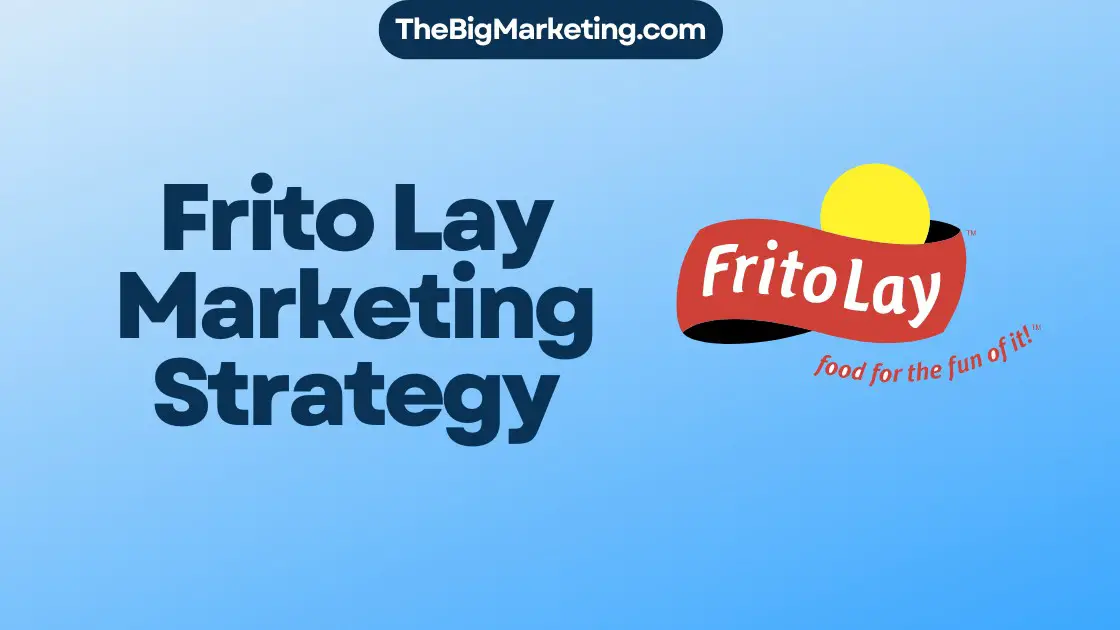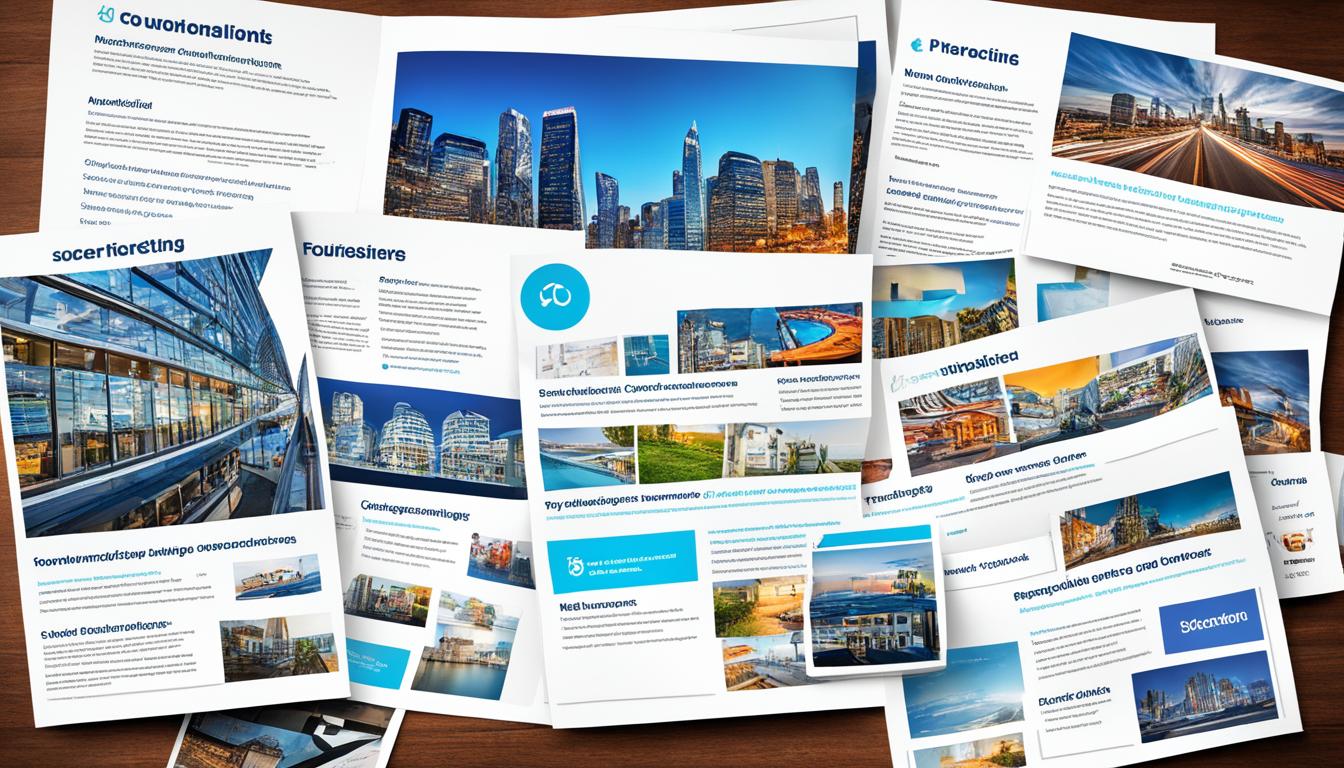A digital marketing strategy framework is crucial for businesses looking to establish a strong online presence. With the ever-increasing importance of digital marketing, having a well-defined plan is essential to stay ahead of the competition. In this article, we will explore the key elements of a digital marketing strategy framework and provide insights from trusted sources on how to create an effective online marketing plan.
Key Takeaways:
- A digital marketing strategy framework is a comprehensive plan that businesses develop to achieve their marketing objectives.
- It involves strategies like SEO, content marketing, social media marketing, digital advertising, and email marketing.
- A digital marketing strategy framework provides a clear direction and focus for marketing efforts.
- It helps optimize resource allocation and improves decision-making.
- Frameworks like RACE Planning, Marketing Funnel, Flywheel Model, Account-Based Marketing Funnel, and Google’s Customer Journey Framework can be used to create an effective digital marketing strategy.
What is a Digital Marketing Strategy Framework?
A digital marketing strategy framework is a foundational document that provides a structured approach for businesses to develop and implement their online marketing plan. It serves as a roadmap for strategic initiatives and aligns marketing efforts with the overarching business objectives. By defining clear goals, target audience, and integrated marketing activities, businesses can optimize their digital marketing strategies to drive success.
A digital marketing strategy framework outlines the flow of the marketing process, identifying critical requirements and key touchpoints. It encompasses various elements such as SEO strategy, content marketing strategy, social media marketing strategy, digital advertising strategy, and email marketing strategy. With this framework, businesses can effectively navigate the dynamic digital landscape and maximize their online presence.
Let’s take a closer look at the key components of a digital marketing strategy framework:
1. Business Objectives
Setting clear business objectives is the first step in developing a digital marketing strategy framework. These objectives define what the business aims to achieve through its online marketing efforts. Examples of common business objectives include increasing brand awareness, driving website traffic, generating leads, and boosting sales. Business owners who pursue a diploma in digital marketing often develop a deeper understanding of how to align their objectives with effective online strategies.
2. Target Audience
Identifying the target audience is essential for crafting a successful digital marketing strategy. By understanding the demographics, interests, needs, and pain points of the target audience, businesses can tailor their marketing messages and select the most appropriate channels to reach and engage with potential customers.
3. Strategic Initiatives
Strategic initiatives refer to the action plans and tactics that businesses implement to achieve their marketing objectives. These may include content creation and distribution, social media management, search engine optimization, paid advertising, email marketing campaigns, and more. Each initiative should be aligned with the overall business objectives and target audience.
Understanding the importance of a digital marketing strategy framework is crucial for businesses that want to succeed in the competitive online landscape. By following a well-defined framework, businesses can strategically plan and execute their online marketing efforts, ensuring that every action is working towards achieving their business goals.
| Key Components of a Digital Marketing Strategy Framework |
|---|
| 1. Business Objectives |
| 2. Target Audience |
| 3. Strategic Initiatives |
The Benefits of a Digital Marketing Strategy Framework
Having a digital marketing strategy framework brings several benefits to a business. It provides a clear direction and focus for marketing efforts, ensuring that all activities are aligned and working towards a common purpose. With a well-defined framework in place, businesses can navigate the complex digital landscape with confidence, driving targeted results and maximizing return on investment.
One of the key advantages of a digital marketing strategy framework is improved decision-making. By following a structured approach to analyze data and evaluate different marketing tactics, businesses can make informed choices that are based on data-driven insights rather than guesswork. This leads to more effective campaigns and better overall results.
Another benefit is optimized resource allocation. With a clear framework, businesses can identify the most effective channels and tactics for reaching their target audience. This enables them to allocate their resources efficiently, ensuring that marketing efforts are focused on areas that are most likely to generate a positive return on investment. By optimizing resource allocation, businesses can avoid wasted time, effort, and budget.
Furthermore, a digital marketing strategy framework fosters collaboration and alignment within the organization. By providing a common structure and language for marketing activities, it enables teams to work together towards shared goals. This leads to better coordination and synergy, ultimately resulting in more cohesive and effective marketing campaigns.
Overall, a digital marketing strategy framework is a powerful tool that enables businesses to navigate the digital landscape with clarity, confidence, and purpose. It provides a roadmap for success by providing a clear direction, improving decision-making, and optimizing resource allocation. By implementing a well-defined framework, businesses can achieve their marketing objectives and drive sustainable growth in today’s competitive digital ecosystem.
RACE Planning Framework
The RACE Planning Framework, developed by Smart Insights, is a comprehensive digital marketing strategy framework that focuses on the customer journey. It consists of four stages: Reach, Act, Convert, and Engage. This framework provides a structured approach to guide businesses in effectively reaching their target audience and achieving marketing objectives.
Reach
The Reach stage of the RACE Planning Framework aims to build awareness and drive traffic to a business’s online platforms. This involves implementing various marketing tactics such as search engine optimization (SEO), content marketing, social media advertising, and influencer partnerships. By reaching a wide audience, businesses can generate interest and engagement with their brand.
Act
Once awareness is established, the Act stage comes into play. This stage focuses on engaging potential customers and encouraging them to take specific actions. It may involve strategies like compelling call-to-actions, interactive content, email marketing campaigns, and personalized user experiences. The goal is to capture the attention and interest of the audience, encouraging them to further explore the brand.
Convert
In the Convert stage, businesses strive to convert leads into customers. This involves nurturing leads and implementing tactics that drive them towards making a purchase or taking a desired action. Conversion rate optimization, remarketing campaigns, email automation, and clear product/service benefits are essential components of this stage. The goal is to encourage potential customers to make a buying decision.
Engage
Once customers are acquired, the Engage stage focuses on building strong relationships and promoting customer retention. This involves providing exceptional customer service, personalized communication, loyalty programs, and social engagement. By engaging with customers, businesses can foster loyalty and advocacy, turning them into brand ambassadors who promote the business to others.
The RACE Planning Framework provides a strategic roadmap for businesses to navigate the customer journey effectively. It ensures that marketing efforts are aligned with the target audience’s needs and preferences at each stage, leading to improved results and greater success in digital marketing campaigns.
| Stage | Description |
|---|---|
| Reach | Build awareness and drive traffic. |
| Act | Engage potential customers and encourage actions. |
| Convert | Convert leads into customers. |
| Engage | Build relationships and promote customer retention. |
Implementing the RACE Planning Framework enables businesses to develop a comprehensive digital marketing strategy that addresses each stage of the customer journey. By adopting targeted tactics and strategies at each stage, businesses can maximize their reach, engage their audience, convert leads into customers, and cultivate customer loyalty for long-term success.
Marketing Funnel
The Marketing Funnel is a widely used digital strategy framework that visualizes the customer journey into four stages: awareness, interest, consideration, and action. It helps marketers understand and track how potential customers move through the funnel, from becoming aware of a brand to taking action. Each stage requires different marketing tactics and strategies to guide customers towards the final conversion.
Awareness
In the awareness stage of the marketing funnel, the primary goal is to capture the attention of potential customers and make them aware of your brand. This is achieved through various marketing activities such as content creation, social media engagement, search engine optimization, and online advertising. The key is to create compelling and informative content that resonates with your target audience and establishes your brand as a trusted authority.
Interest
Once potential customers are aware of your brand, the next stage is to generate interest in your products or services. This involves providing additional value, addressing pain points, and showcasing the unique benefits your offerings bring. Content marketing plays a crucial role in this stage, as it allows you to deliver targeted and personalized messages that engage your audience and build a desire for what you have to offer.
Consideration
In the consideration stage, potential customers are actively evaluating your offerings and comparing them to competitors. This is the time to provide detailed information, testimonials, case studies, and product demos to help them make an informed decision. Building trust and credibility is essential in this stage, as it significantly influences the customer’s final choice.
Action
The final stage of the marketing funnel is the action stage, where potential customers are ready to make a purchase or take a specific action. This is the moment to make the buying process as seamless and straightforward as possible, removing any barriers or friction. Clear calls-to-action, user-friendly website navigation, and simplified checkout processes are vital to guide customers towards conversion.
| Stage | Description | Marketing Tactics |
|---|---|---|
| Awareness | Creating brand awareness and capturing attention | Content creation, social media engagement, SEO, online advertising |
| Interest | Generating interest and desire for your offerings | Targeted content marketing, personalized messages |
| Consideration | Evaluating options and building trust | Detailed information, testimonials, case studies |
| Action | Driving conversions and guiding the buying process | Clear calls-to-action, user-friendly website navigation, simplified checkout |
Flywheel Model
The Flywheel Model, introduced by Hubspot, is a customer-centric digital marketing strategy framework that prioritizes customer satisfaction and advocacy to drive business growth. By placing customers at the center of the model, businesses aim to create a positive feedback loop where satisfied customers become advocates for the brand, generating momentum and sustainable growth.
The Flywheel Model emphasizes the importance of delivering a seamless and satisfying customer experience, as customer satisfaction is closely tied to advocacy. When customers have a positive experience with a brand, they are more likely to share their experience with others and recommend the brand to their networks. This word-of-mouth marketing can significantly impact a brand’s reputation and attract new customers.
By focusing on the Flywheel Model and adopting a customer-centric approach, businesses can cultivate brand loyalty and create a strong customer base. Satisfied customers not only continue to purchase from the brand but also become brand advocates who promote the brand organically. This results in increased customer retention, higher customer lifetime value, and a stronger market presence.
Account-Based Marketing Funnel
The Account-Based Marketing Funnel, also known as the flipped funnel, is a digital strategy framework that focuses on identifying and winning valuable accounts. It involves aligning sales, marketing, and customer success teams to target specific accounts and nurture them throughout the customer journey. This approach emphasizes customer acquisition and advocacy, creating a strong foundation for long-term business growth.
Account-Based Marketing (ABM) is a strategic approach that allows businesses to target and engage high-value accounts by tailoring their marketing efforts to meet the specific needs and interests of those accounts. Unlike traditional marketing, which focuses on reaching a broad audience, ABM concentrates on building relationships with individual accounts and treating them as markets of one.
The account-based marketing process begins by identifying the most valuable accounts that align with the company’s target market and business objectives. Once the target accounts are identified, the sales, marketing, and customer success teams collaborate to develop personalized marketing campaigns and strategies that resonate with each account’s unique needs and preferences.
ABM utilizes various channels and tactics to engage and nurture the targeted accounts throughout their customer journey. This may include personalized email campaigns, targeted advertising, account-specific content, personalized landing pages, and one-on-one interactions with the account’s decision-makers.
Benefits of using the Account-Based Marketing Funnel:
- Customer Acquisition: By focusing on high-value accounts, ABM increases the likelihood of acquiring valuable customers who align with the business’s ideal customer profile, leading to higher conversion rates and revenue growth.
- Customer Advocacy: ABM emphasizes building strong relationships with targeted accounts, increasing customer satisfaction and loyalty. Satisfied customers are more likely to become brand advocates, referring the business to others and contributing to long-term business growth.
In summary, the Account-Based Marketing Funnel enables businesses to prioritize and personalize their marketing efforts towards high-value accounts, resulting in improved customer acquisition and advocacy. By aligning sales, marketing, and customer success teams, businesses can create targeted campaigns that resonate with individual accounts, building long-lasting relationships and driving sustainable growth.
Google’s Customer Journey Framework
Google’s Customer Journey Framework, often referred to as the messy middle, is a digital marketing strategy framework that reflects the complexity of the customer buying journey. It highlights the various stages a customer goes through, from triggers that set them on a buying journey to exploring and evaluating different solutions. This framework emphasizes the need for marketers to adapt their strategies to meet customers’ changing behaviors and preferences.
Stages of the Buying Journey
The Google customer journey framework recognizes that customers don’t simply go straight from trigger to purchase decision. Instead, they take a more exploratory approach, seeking information, comparing options, and evaluating alternatives. This framework breaks the customer journey into four key stages:
- Trigger: This is the initial event or need that sparks the customer’s interest in finding a solution.
- Exploring: In this stage, the customer actively seeks out information and explores different options.
- Evaluating: The customer evaluates the available options and considers their suitability to their needs and preferences.
- Purchase Decision: Finally, the customer makes a decision and completes the purchase.
By understanding these stages and the factors that influence customers at each stage, marketers can tailor their strategies and messaging to effectively engage and guide customers through the buying journey.
| Stage | Description |
|---|---|
| Trigger | The initial event or need that sparks the customer’s interest in finding a solution |
| Exploring | The customer actively seeks out information and explores different options |
| Evaluating | The customer evaluates the available options and considers their suitability to their needs and preferences |
| Purchase Decision | The customer makes a decision and completes the purchase |
Throughout the customer journey, it’s essential for marketers to provide valuable and relevant content that addresses the customer’s needs and concerns at each stage. By doing so, they can build trust, establish authority, and increase the likelihood of converting leads into loyal customers.
Conclusion
A well-defined digital marketing strategy framework is crucial for businesses to achieve success in today’s competitive market. By utilizing frameworks such as RACE Planning, Marketing Funnel, Flywheel Model, Account-Based Marketing Funnel, and Google’s Customer Journey Framework, businesses can create optimized digital marketing strategies that drive leads, sales, and customer satisfaction.
A digital marketing strategy framework provides a roadmap for businesses to target the right audience and implement effective tactics. It ensures that marketing efforts are aligned with business objectives, leading to better decision-making and resource allocation. With a clear direction and focus, businesses can achieve their marketing goals and enhance their online presence.
Implementing a digital marketing strategy framework helps businesses stay ahead of the curve and adapt to changing customer behaviors and preferences. It allows them to analyze data, evaluate different marketing tactics, and make informed decisions. By utilizing the right frameworks, businesses can create a strong foundation for long-term business growth and maximize their return on investment in the digital space.
FAQ
What is a digital marketing strategy framework?
A digital marketing strategy framework is a document that outlines the flow of the marketing process, identifying critical requirements and key touchpoints. It provides a clear direction and focus for marketing efforts, aligning them with business objectives.
What are the benefits of having a digital marketing strategy framework?
Having a digital marketing strategy framework brings several benefits to a business. It provides a clear direction and focus for marketing efforts, ensuring that all activities are aligned and working towards a common purpose. It improves decision-making by providing a structured approach to analyze data and evaluate different marketing tactics. It also optimizes resource allocation by identifying the most effective channels and tactics for targeting the audience.
What is the RACE Planning Framework?
The RACE Planning Framework, developed by Smart Insights, is a comprehensive digital marketing strategy framework that focuses on the customer journey. It consists of four stages: Reach, Act, Convert, and Engage. Reach involves building awareness and driving traffic, Act focuses on engaging potential customers, Convert aims to convert leads into customers, and Engage focuses on building strong relationships for customer retention.
What is the Marketing Funnel?
The Marketing Funnel is a widely used digital strategy framework that visualizes the customer journey into four stages: awareness, interest, consideration, and action. It helps marketers understand and track how potential customers move through the funnel, from becoming aware of a brand to taking action. Each stage requires different marketing tactics and strategies to guide customers towards the final conversion.
What is the Flywheel Model?
The Flywheel Model, introduced by Hubspot, puts customers at the center of the digital marketing strategy framework. It emphasizes the importance of customer satisfaction and advocacy in driving business growth. The model aims to make the customer experience as easy as possible, creating a positive feedback loop where satisfied customers become advocates for the brand. This customer-centric approach helps businesses generate momentum and drive sustainable growth.
What is the Account-Based Marketing Funnel?
The Account-Based Marketing Funnel, also known as the flipped funnel, is a digital strategy framework that focuses on identifying and winning valuable accounts. It involves aligning sales, marketing, and customer success teams to target specific accounts and nurture them throughout the customer journey. This approach emphasizes customer acquisition and advocacy, creating a strong foundation for long-term business growth.
What is Google’s Customer Journey Framework?
Google’s Customer Journey Framework, often referred to as the messy middle, is a digital marketing strategy framework that reflects the complexity of the customer buying journey. It highlights the various stages a customer goes through, from triggers that set them on a buying journey to exploring and evaluating different solutions. This framework emphasizes the need for marketers to adapt their strategies to meet customers’ changing behaviors and preferences.
Why is a well-defined digital marketing strategy framework crucial?
A well-defined digital marketing strategy framework is crucial for businesses to achieve success in today’s competitive market. It provides a roadmap for targeting the right audience, implementing effective tactics, and achieving marketing objectives. By utilizing frameworks such as RACE Planning, Marketing Funnel, Flywheel Model, Account-Based Marketing Funnel, and Google’s Customer Journey Framework, businesses can create optimized digital marketing strategies that drive leads, sales, and customer satisfaction.





